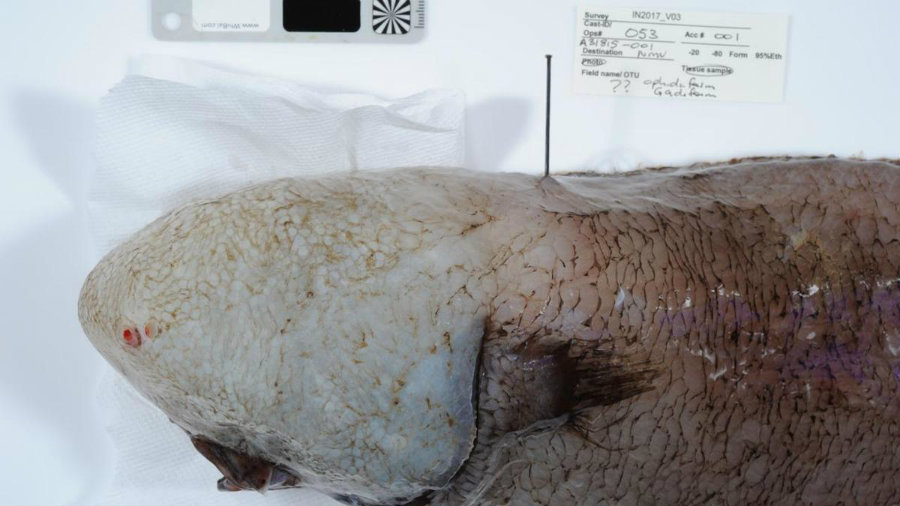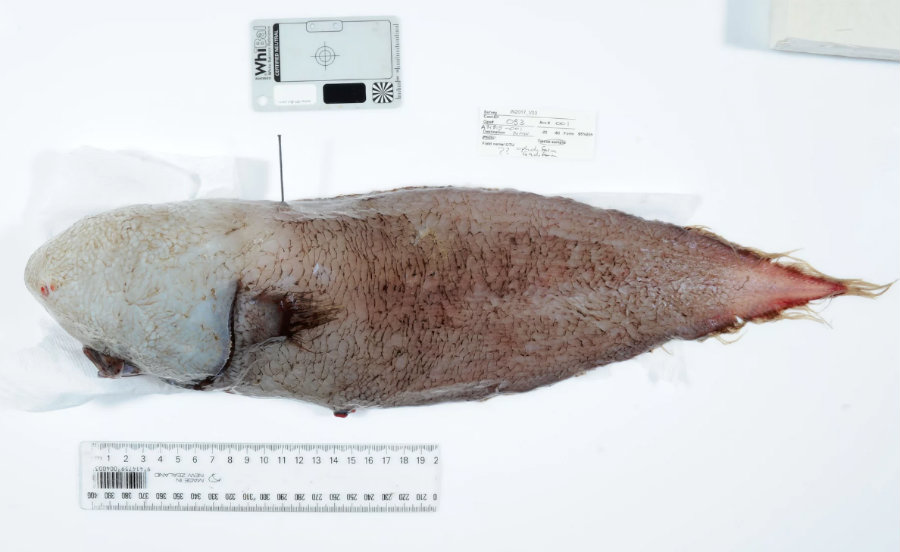A team of Australian scientists found a faceless fish at a depth of 13,000 feet in the Jervis Bay Commonwealth Marine Reserve.
After closer examination, it was determined that it is not a new species, but rather a cusk eel or Typhlonus nasus, derived from the Greek name for “blind hake.”

Although it is not a discovery, it is the largest specimen of its kind to be found.
An abyssal faceless cusk eel
The fish was obtained from the seafloor, where temperatures are just above the freezing level at 1-degree Celsius. Expeditioners noted that the landscape was “barren” until they found the faceless fish. They had no idea of what it was, which drove them to obtain tissue samples and send images to experts on abyssal fishes.
Eel expert John Pogonoski from the Australian National Fish Collection was the first to identify the specimen, as he had seen a similar animal on an old scientific document. He then confirmed the fish to be a cusk eel, which was then recognized to be a Faceless Cusk. The first specimen of the genus was collected on August 1874, at a depth of 2440 fathoms or 14,640 feet in the Coral Sea.

The find was possible thanks to the HMS Challenger, the first oceanographic expedition to travel most of the Pacific Ocean. It parted from England in December 1872 with 243 crewmembers and managed to reach Australia.
Current expedition leader Dr. Tim O’Hara reported that the find marked the first time a cusk eel had been found in Australian waters since 1873. It is known to habit in the proximity of Indonesia, Japan, and Hawaii at depths no less than 13,000 feet.
Researchers note the 17-inch-long eel’s anatomy, calling it striking because it looks like a fish without a face. Its mouth is located in its lower section, and if it is seen from above or its sides, it may seem like if it does not have eyes, gills, or a mouth. In reality, the fish does have very small eyes that appear to be covered by skin.
If he only knew how famous he'd become, imagine the look on his face! Oh…wait #faceless #abysslife #RVInvestigator https://t.co/VmtNTQH8ah pic.twitter.com/utrJZuIER9
— CSIRO (@CSIROnews) May 31, 2017
“The abyss is the largest and deepest habitat on the planet, covering half the world’s oceans and one-third of Australia’s territory, but it remains the most unexplored environment on Earth,” stated O’Hara.
There is not much information on the Faceless Cusk, although it is known to belong to the Ophidiidae family, whose members are not eels per se but are shaped like them. The key feature that differentiates Ophidiidae from eels is that the former have ventral fins, while eels do not. Some species are known to grow up to 2 meters long, but most are shorter than 1 meter. They lay eggs and their feed on plankton in the early stages of their life.
A common variety of cusk eel is the pink cusk eel, found at depths of 72 to 3,281 feet. They can live for up to 30 years and can be found on the coasts of Australia, Brazil, and Chile. Unlike many other members of the cusk eel family, the pink cusk eel is fished commercially.
Source: Marine Biodiversity HUB
